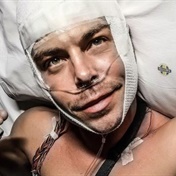Researchers at Rensselaer Polytechnic Institute have developed a way to print living skin with blood vessels, according to a news report.
The research was published in Tissue Engineering Part A and is a great step towards creating more realistic-looking skin grafts for patients who need it after injury or surgery.
Biologically relevant vascular structure
"Right now, whatever is available as a clinical product is more like a fancy Band-Aid," said Pankaj Karande, an associate professor of chemical and biological engineering in a news report.
While skin grafts have been implemented in surgeries, the big drawback was the absence of a functioning vascular system, which means that circulation could suffer.
A skin graft is used to permanently replace damaged skin or to provide covering for a large wound. The skin is the biggest organ and protects the body from fluid loss and acts as a barrier against external bacteria.
Now, with key elements such as the endothelial cells, which are found on the inside of blood vessels, as well as human pericyte cells and animal collagen, the cells will start to communicate and form a biologically relevant vascular structure within a few weeks, according to the news report.
"As engineers working to recreate biology, we've always appreciated and been aware of the fact that biology is far more complex than the simple systems we make in the lab," Karande stated . "We were pleasantly surprised to find that, once we start approaching that complexity, biology takes over and starts getting closer and closer to what exists in nature."
Transfer of blood and nutrients
The Yale team, who undertook the research, grafted the 3D printed skin onto a special type of mouse. The vessels from the designed skin then started to communicate with the vessels of the mouse.
According to Karande, that was the most important aspect – an actual transfer of blood and nutrients, which would help keep the skin graft alive.
More research is needed before making this concept work in a clinical setting on actual humans. The cells of the donor skin will need to be edited with CRIPSR technology in order to be compatible and connect with the patient’s body.
More work is also needed to see how this will function in burn victims, where nerve and vascular endings are damaged. But, according to Karande, it’s already a step closer to improvement for people who need skin grafts for diabetic ulcers or pressure sores.
"For those patients, these would be perfect, because ulcers usually appear at distinct locations on the body and can be addressed with smaller pieces of skin," Karande said. "Wound healing typically takes longer in diabetic patients, and this could also help to accelerate that process."
Image credit: iStock




 Publications
Publications
 Partners
Partners











